So, in your family a happy event - a child was born. From now on, he has a long way to go from a tiny lump to an almost conscious one-year-old baby. No matter how fast it develops, in the first 12 months it will learn a lot and will never learn everything at that speed (the kid learns to watch others, smile, aguk, roll over, sit on the priest, walk, play and much, much more ...). Young mothers are not always clear whether the crumbs have development problems or, on the contrary, is ahead of schedule. Purpose of the article – tell what changes happen to your child in each of the 12 months of his first year, what the baby learns in the first year of his life and how he perceives the world around him.
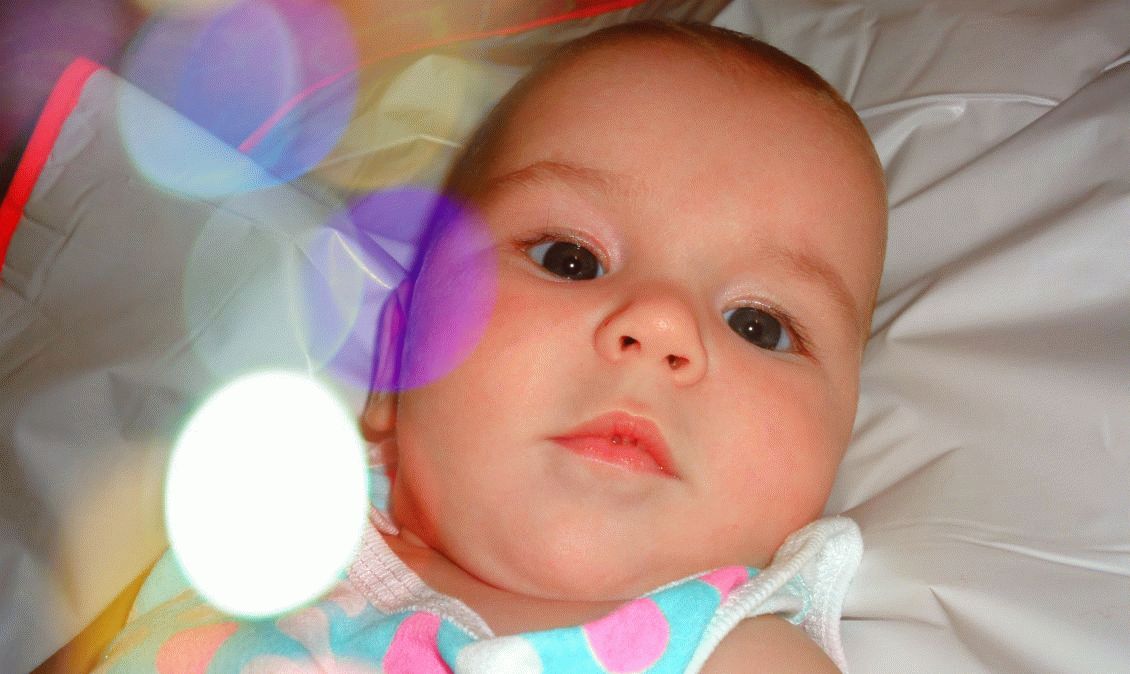
ATTENTION! NOT TO WRITE IN THE COMMENTS ABOUT CHILDREN WONDERKINDS! Each infant, just like an adult, is individual and each child develops individually, but something common in the development of newborn children occurs the same way.
- A complete list of things for a newborn baby – list of things;
- Children's first-aid kit: composition of the first-aid kit – complete first aid kit list.
Monthly Development Calendar
First month
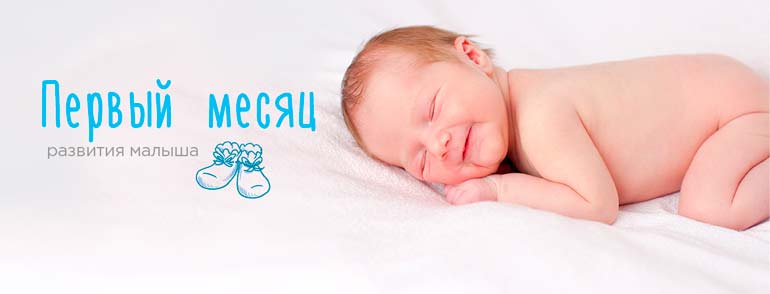
A difficult month for young mothers. The first month of a newborn’s life is usually called the adaptation period. He sleeps almost 20 hours a day. Sleep is very important for a baby. In a dream he grows (on average, in the first month a child grows by 2-3 cm.), and the body gets used to the new environment. During wakefulness, he randomly waves his hands clasped into fists and legs bent at the knees. Toward the end of the first month, the child is already able to hold his head briefly, focus his eyes on bright toys, adults' faces, make vowel sounds and listen to the conversation of others.
Pediatricians consider it important to attach the baby to the chest in the first minutes of the baby's life. They believe that at this time an “emotional contact” is created between the baby and mother. Also, the first milk (colostrum) is very useful for a newborn baby. Read why -What is the importance of putting a newborn to the breast early (applying immediately after birth)
A little important in this period of a child’s life is nutrition. On average, in the first month a child gains in weight about 600 - 700 grams.In no case should you rush the baby during feeding. When the baby is near the chest, he also enjoys at this moment the warm and caring mother.
At birth, the baby has congenital reflexes, thanks to which he adapts to the environment. But during the first months of life, part of the reflexes disappears. These reflexes include:
- Sucking;
- Swimming (if you put the baby in the belly on the water, it will make swimming movements);
- Grabbing (touching his hand, he squeezes it into a fist);
- Search (mother breast search);
- The reflex of walking (if you hold the child, then he begins to move his legs, as if walking) and many others.
The following reflexes remain with the child for his whole life: blinking, sneezing, yawning, trembling, etc.
It is through reflexes that pediatricians and child psychologists determine the condition and development of the child’s nervous system.
READ ALSO: The main congenital reflexes of children. Unconditioned and conditioned reflexes.
And mothers in the first month of a child’s life need to surround him not only with warmth, care, safety, but also accustom him to the day-night regime by the end of the first month.
In the first two weeks, do not forget to treat the baby with an umbilical wound: see how to properlyto process.
In the first months (usually up to 3 months), 80% of babies experience abdominal pain due to colic and gas. The child arches his back, rolls his legs and cries heart-rendingly. We strongly recommend that you read the publications on the topic colic and gas workers.
- The increase in weight is approximately 600-700 grams, in growth - 2-3 cm.
- Eats every 2 hours, at night 3-5 times on average.
- He sleeps a lot, awake 2-4 hours a day.
- Actions are so far reflexive.
- The movements are chaotic, the fists are compressed.
- When the child lies on his stomach, he tries to raise his head.
- The main way to communicate with the world is crying. So the child makes it clear that he is hungry, that he has a wet diaper, that something hurts him, or that he just wants attention. The child may whimper or grunt, so he also informs his mother about the discomfort.
- Able to fix his gaze on fixed objects for some time - his mother’s face or hanging toy.
- Reacts to loud and sharp sounds - ringer, toys, bell. He can listen, startle, and even cry.
- Recognizes mother's voice and smell, reacts to them.
- If you communicate with the child all the time, then by the end of 1 month his own “speech” will begin to appear - humming, or agucanie.
In detailFirst month development
Second month
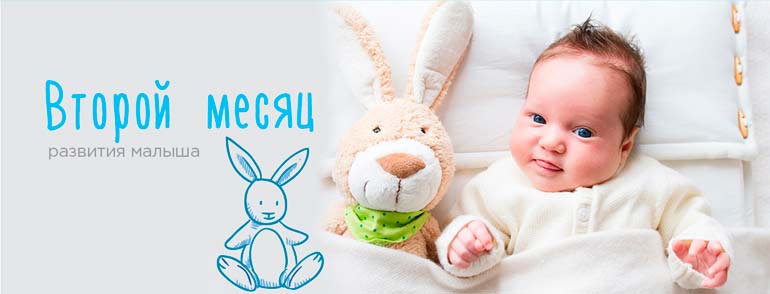
The second month of the child’s development can be called a period of “revitalization”. During this period, he not only looks at your face, but also can distinguish your emotional state. You smile at him, or vice versa, angry, calm or sad. And when you come to his crib, the baby begins to randomly wave its arms and legs. In the second month of life, the child is more confident in holding his head. Toward the end of the second month, the child should gain 800 g in weight, and his height should increase by another 3 cm.
- He grew by 3 cm, weight gain ranged from 700 g to 1 kg.
- It becomes more active - awake on average for 15-20 minutes per hour. May confuse day and night and want to play and chat when parents are sleeping.
- Able to lift and briefly hold the head.
- He spreads his arms to the sides, flips from side to back.
- He actively walks, as though singing the sounds “a”, “o”, “y”, the combination “aha”, “aha”, “boo”.
- Demonstrates a "revitalization complex." It manifests itself in a broad smile, stretching the arms and legs to the mother and their active movement, walking.
- Calms down during sucking and on hands.
- It can accompany an object with a look, closely watch approaching or moving objects, turn a head on a sound source.
- The coordination of movements improves. The child can throw the pens to the sides, he has already found them and is happy to explore - examines, sucks his fingers.
- Hands are clenched into fists, but you can spread your baby’s palms and put a rattle in there, he will try to hold it.
- The first attempts to reach the subject appear.
- Vision is improved, the child begins to distinguish colors, the first understanding appears that the world is full of colors.
- The reflexes of the newborn fade away.
In detail two-month development
Third month
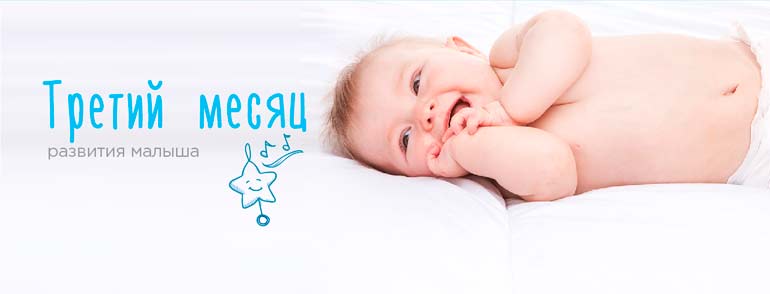
At the third month, the child is more confident in holding his head. It can rest on its forearms, if you put it on your tummy. It is important during this period to turn it over to the tummy more often, this will help the baby get rid of the formed gases in the stomach and help strengthen the muscles of the neck and back. And also do not let the baby lie on its side for a long time, this can lead to curvature of the spine.
During this period, the child is already more focused on bright toys. It can talk to itself, make not only single vowels, but also consonants. Becomes more curious about things and events surrounding him. He sticks his nipple out of his mouth, and then tries to shove it back.
By the end of the third month, the child should add another 800 g in weight and 3 cm in height. The period between sleep can be 1-1.5 hours. Be sure to surround him with care and warmth. Talk to your baby more often, hug, kiss, grab and hold the room with him.
- Height - increase 3-3.5 cm. Weight - increase 750 g.
- Night sleep lengthens, daytime shortens.
- Lying on his stomach, the child holds his head for 20-25 seconds, in an upright position - up to 15 seconds, easily turns it in different directions.
- Turns from the back to one side, in a position on his stomach, he tries to lean on his elbows.
- He smiles, recognizes loved ones, walks, “sings” during communication.
- It becomes more emotional, knows how to laugh out loud, parodies the facial expressions of parents.
- Able to cry and cry to express discontent and demand attention. Observational parents may even notice the first manifestations of the nature of their crumbs.
- Easily recognizes the source of light and sound.
- If the mother holds the child above a hard surface, he pushes away from the support and, as it were, “bounces” and rolls her legs.
- The hands are already straightened, the baby pulls the handles to the proposed toy and tries to grab it, trying to hit the rattle above it. He will surely pull the toy into his mouth.
- The kid has already found his legs, and with his hands he is trying to examine his face.
- The movements as a whole acquire an arbitrary character.
In detail Child development at 3 months
Fourth month
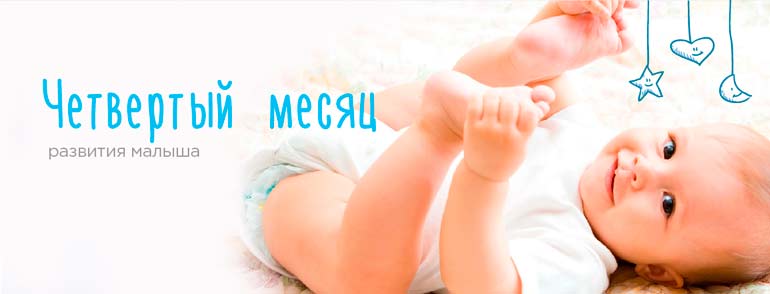
At the fourth month, the child can confidently hold his head. Reacts and turns to sound. Lying on his tummy, can lean on his hands and straighten them. It can reach for a toy on its own, grab it, closely examine it, taste it. Identify your mom from other people.
- Height + 2.5 cm, weight + 700 gr.
- It turns over from the back to the stomach, holds its head well and turns it to the sides, confidently supports the body on the elbows when it lies on the stomach.
- Takes the first attempts to sit down, raises the upper body.
- Crawls on the stomach in a crib or on a rug.
- Arbitrarily captures and holds the toy with one or two hands, tastes it.
- The child has his favorite toys.
- It makes the first conscious manipulations with objects: knocks, throws.
- When feeding, it supports a breast or a bottle.
- Babble gradually begins to take the place of walking, the first syllables appear - "ma", "ba", "pa".
- It captures the eye and closely monitors moving objects.
- He looks at his reflection in the mirror.
- When communicating, the child gives preference to mom, is naughty, even if she has departed very briefly.
- Distinguishes between friends and foes, actively smiles, laughs, may even squeal with delight.
- It reacts to music - it calms down when it hears and listens carefully.
- Reacts when his name is pronounced.
In detail Development at 4 months of age
Fifth month
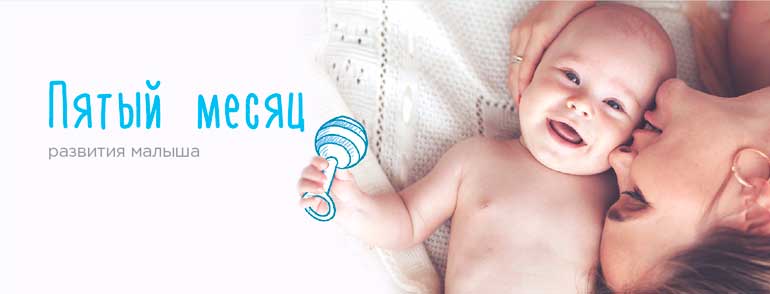
This is a new leap in the development of your child. During this period, he can turn over independently. Some at this age try to sit on the pope. Crawl on the floor or crib on the tummy. Trying to get to their feet. It is very important to hold the baby by the armpits and teach him to walk. In order to train the muscles of the legs and rid him of further flat feet and “bouncing” while walking. The child can clearly identify his close people from strangers. More confidently makes sounds, though not yet conscious. Teach him to pronounce the simplest words, such dad, mom, grandfather, woman. On average, in the fifth month your child will add about 2.5 cm in height and about 700 grams in weight.
- Growth +2.5, weight + 700 gr.
- It knows how to turn over from the back to the stomach and back, rests on the palms, confidently holds its head in an upright position, looks around.
- Can sit with support for a while.
- An important sign of the normal development of the nervous system is the ability to distinguish between friends and foes. The child may be wary of the appearance of a stranger, reluctantly go to his hands, may be frightened and cry loudly. He prefers to be on the hands of his parents.
- Itself encourages parents to communicate, pulls hands to mom, smiles, babbles, pronounces the first syllables. If communication is not enough, the child is naughty.
- Willingly plays with objects - pulls up to himself, throws, knocks, licks.
- Plays with food.
- Some children suck their toes.
- He looks at the faces in the pictures with interest.
- Most children begin to teethe.
In detail 5 months development
Sixth month
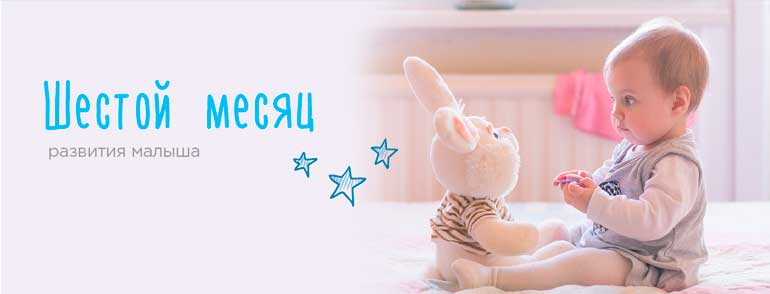
At this age, the child can already distinguish his name from another name. Can sit on the pope without help. Confidently holds toys in his hands, shifts them from one hand to another. Lying on his tummy, can pull up his legs and try to get on all fours. Learns to pronounce individual syllables: pa-pa, ma-ma.
Many at this age begin to feed the baby with complementary foods. Just try not to give him salty and sweet food, as the kidneys and intestines are not yet sufficiently developed for this. Consult with your doctor what food you can give your baby at this age.
- Height +2.5 cm, weight +700 gr.
- Sits and sits independently for some time.
- Crawls "in a plastubsky" way, is able to crawl to a toy lying 10-20 cm from it.
- He gets up on all fours and sways back and forth. This is an important indicator - so the child prepares for full crawl.
- Leans and turns in different directions.
- Drinks from a mug, if you hold it, plays with food.
- Picks up fallen objects, transfers the toy from hand to hand or from one box to another.
- He studies with interest and can break objects.
- Simple causal relationships are formed: the object pushed - it fell, pressed the button - the music turned on.
- Looks at the large object that mother is talking about.
- The child is very emotional, his mood is constantly changing, he screams when he is dissatisfied and laughs out loud when they play with him.
- He enjoys playing cuckoo, can clap his hands.
- He listens attentively to human speech and reproduces sounds and syllables, actively babbles. The consonants “s”, “s”, “c”, “f” appear.
In detail Half a year development
Seventh month
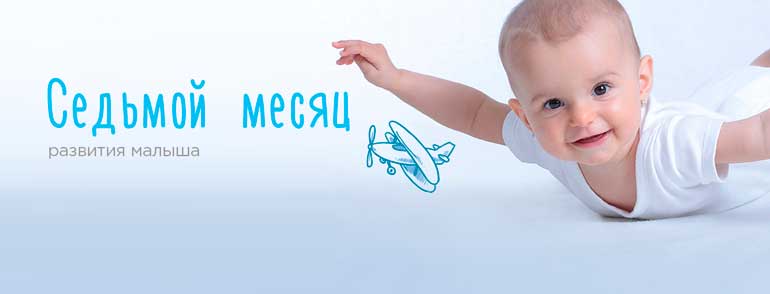
By the seventh month, the child is already becoming a fidget. It can easily be rolled independently from the back to the tummy or to the side. He distinguishes between objects and if you ask him, for example, to say where the watch is, he will turn his head slightly around and show them. With the help of support, he can walk, crawl on his own mainly backward. He hits the toys against each other, throws them and watches intently as they fall to the floor or hit the wall, often smiling.
Children at this age love to swim, as they already confidently sit and can play with toys.
In terms of the diet, it will be useful to give a child at this age a little cottage cheese and meat to replenish the supply of calcium in the body, for its further growth and accelerate the process of teething. Potassium, for the normal functioning of the heart and protein, for muscle growth.
Try to monitor at this age the cleanliness of the floor, toys and those items that the child can grab. Because at this age he will taste them, i.e. everything that gets caught will be thrust into the mouth.
By the end of the seventh month, the child should gain an average weight of about 550-600 grams and a height of 2 cm.
- Height +2 cm, weight + 600 gr.
- He sits confidently, holds his back straight, sometimes rests on his hand.
- A crawling skill appears or is being improved; some children crawl backwards.
- Removes food from a spoon, drinks from a mug with support.
- Himself stands at the support, is able to stand for some time.
- He likes to “walk” when his mother supports him under the arms or hands.
- Grasping movements are improving, fine motor skills of the hands are developing. The child is delighted with the finger games - "Magpie-crow", "Ladushki".
- With pleasure, he studies the properties of surrounding objects: knocks them, shakes, throws them to the floor, disassembles, breaks, pulls into his mouth. Can hold a toy in each hand and bang them against each other.
- Shows where he has eyes, nose, mouth, ears, examines himself with his hands and with his mouth.
- Begins to copy adult behavior.
- He actively babbles, chants the sounds “ta”, “yes”, “ma”, “na”, “ba”, “pa”, onomatopoeia “av-av”, “kva-kva” and others appear.
- He enjoys looking at pictures in books, leafing through pages.
- Determines by tone of voice what “no” means.
In detail about development in 7 months
Eighth month
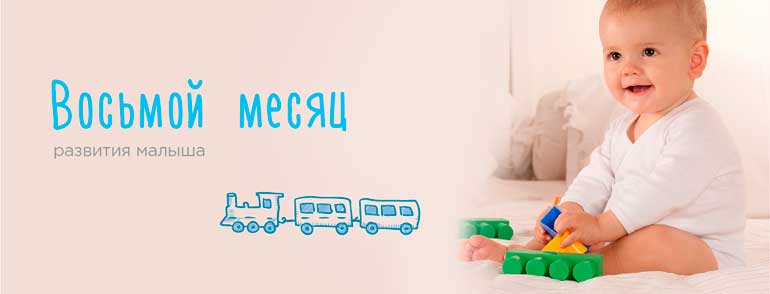
At this age, the main thing is not to leave one child at a height. Since he can already move independently, sit down. He is looking at new toys with interest. Can identify mom and dad from strangers from a photograph. He can understand the game "ladies" or the well-known "cuckoo." If you ask the baby to wave your hand after him, he will wave with pleasure. A little begins to understand what he is being asked for. Tries to eat on his own.
- Height +2 cm, weight +600 gr.
- She is very attached to her mother, she even experiences a short separation very painfully, she is wary of strangers.
- Itself sits, gets up, walks with added steps at a support.
- Freely moves in a familiar space.
- Can carry out simple orders - bring, show.
- Actions with objects become correlative: the child covers the jars with lids, strung the rings of the pyramid.
- The range of emotions is expanding, you can notice discontent, surprise, joy, delight, perseverance.
- The first conscious words appear - “mom”, “dad”, “give”.
- Vocabulary is actively growing, new babbling sounds and words constantly appear.
- He likes to listen to music, dance to it, clap hands and stomp legs.
In detail 8 months development
Ninth month
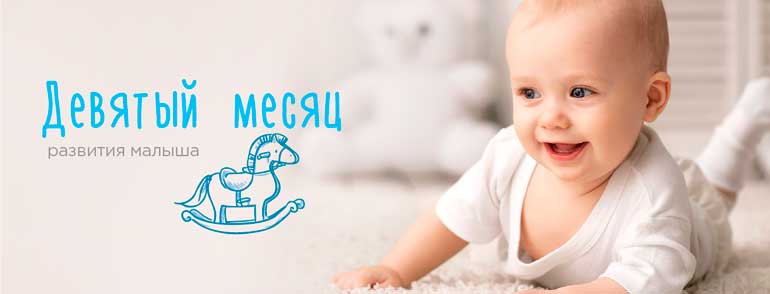
Clutching a nearby chair, sofa or playpen, the child can independently rise and move around, holding on to them. Falls, cries and stands back. During this period, the child learns to walk independently. He likes to repeat words after adults, or rather syllables. Already can drink from a cup held by an adult.
- Height +2 cm, weight +600 gr.
- He gets up from a sitting position, sits down from a supine position, stands and walks with support. Trying to climb onto a sofa, chair, chair, open drawers.
- It unfolds while crawling.
- She knows where to put toys and where mom removed this or that item. He wants to get everything that surrounds him.
- He is actively showing emotions towards his parents - he is dissatisfied and breaks out when his mother brushes his ears or cuts his nails, gets scared if he has lost sight of his mother.
- Tries to manipulate adults with screaming and crying.
- He tries to eat with a spoon and shows the first independence in dressing.
- Fine motor skills are being improved - a child can take small objects, sticks his fingers into holes. Can knead a piece of plasticine and tear paper.
- Memorizes the names of objects, can show them.
- It repeats the actions of adults and can fulfill some tasks.He likes to do everything publicly, repeats the action, if asked.
- He knows the meaning of the words “lie down”, “give”, “go”, “sit”.
- Speech is actively developing. A child’s own “language” is being formed, understandable only to loved ones.
In detailBaby development at 9 months
Tenth month
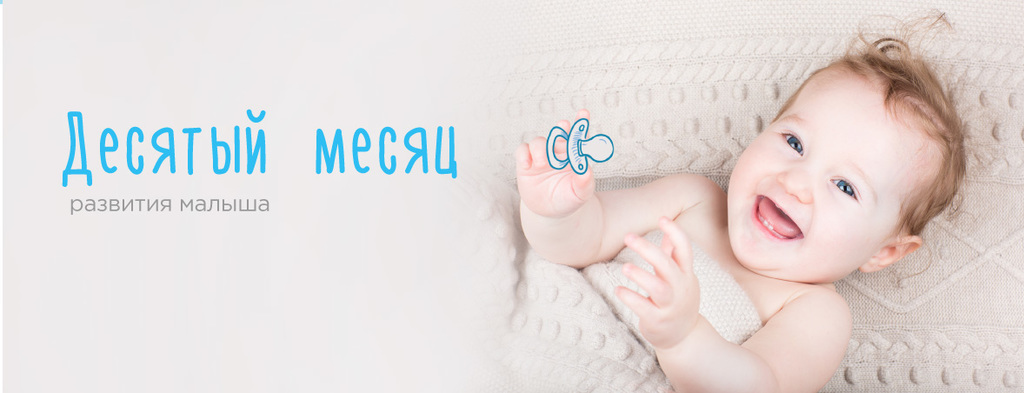
At this age, the child mimics the movements of adults and animals with movements. Can independently play with toys, confidently holds them in hands. Fingers can flip through books. With the help of adults can play with other children. He understands when they say to him "no."
- Height +1 cm, weight +350 gr.
- Sits down from a standing position, quickly moves crawling, can stand without support and tries to walk.
- He loves to dance, dab, clap his hands.
- Small finger movements become more perfect, the child holds two or three small objects in one hand.
- Performs complicated actions: opens and closes, hides, picks up.
- Repeats movements and reproduces facial expressions of adults.
- It is used mainly with one hand.
- He understands what needs to be done with objects - he rolls a typewriter, pushes a tumbler, collects a pyramid, builds turrets from two or three cubes.
- He likes to put objects into each other, drag them from place to place.
- More interested in small items than large ones.
- Finds logical connections - for example, a machine can be moved using a wand or slipper.
- It can show parts of the face in itself, in mom, in the doll.
In detail Development at 10 months of age
Eleventh month
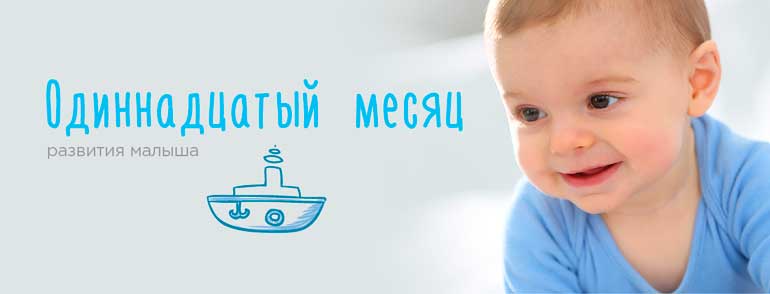
This is almost an "adult child". Moves independently, sits down, crawls, gets up. Understands simple requests. Learns to pronounce the first words.
- Height +1 cm, weight +350 gr.
- He actively moves, sits up, stands up, lies down, can walk a short distance without support.
- He tries to show independence - he eats with a spoon, drinks from a mug, puts on socks and shoes.
- Very brightly reacts to a new toy, to an unfamiliar environment, strangers.
- Understands strict speech. He knows what it is “impossible”, he understands from his mother’s reaction that he did good or bad.
- Likes praise.
- He babbles and talks a lot in his “language," the words "mother", "dad", and "woman" distinctly say.
- He uses various means of expressing his desires, except for crying - he points with his finger, looks away.
- He waves his hand at parting.
- Nods affirmatively or shakes his head in the negative.
- He loves musical toys, vivid illustrations in books.
- Captures beads or beans with forefinger and thumb.
In detail 11 months development
Twelfth month
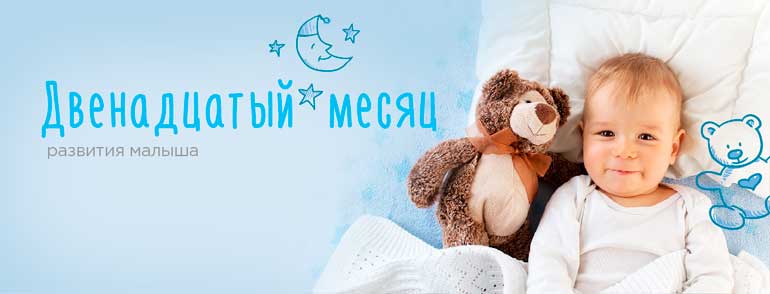
At almost a year old, in most cases, the child already begins to walk independently without support, to stand. Actively involved in the process of eating, bathing and dressing. Shows a sense of caring for toys. Feeds them and puts them to bed. It repeats the sounds that it will hear on the street, on TV or at home. Starts to pronounce the first words. True, these words are not always clear to everyone. But those who will listen carefully to the child will understand them.
- Height +1 cm, weight +350 gr.
- He stands, squats, walks on his own.
- He steps over obstacles and crouches to lift an object from the floor.
- Actively involved in everything that concerns him - dressing, washing hands, brushing teeth.
- He uses a spoon, drinks from a mug, knows how to chew solid food.
- Food addictions are clearly manifested - the baby does not eat if he does not like the food.
- Needs parents and is attached to their toys. Painfully perceives the absence of mom or dad.
- Collects and assembles toys; if you need to free your hand, put the item under your arm or mouth.
- He knows how to use objects - a telephone, a hammer, a broom.
- Searches for an item, even if he did not see where it was placed.
- He understands everything that is told to him.
- He talks about his desires - “give”, “on”, calls for mom, dad, grandmother.
In detail 12 months development
All the above indicators are conditional.The development of a child depends on many points - this is heredity, living conditions, and social environment. Get joy from talking with your baby, praise him for his success and do not be discouraged if he has not yet learned something. Everything has its time. Your child is the best, and it is in your power to help him become a harmonious, developed little man.
Summarized: What should a child be one year old
The development of a child in one year is very rapid. In just 365 days, the child turns from a tiny, incapable and unaware little man into a rational one. At 1 year old, he already knows how to walk, sit down, get up, eat, drink, play, talk, feel and understand. The main thing is to protect the child with care and love at this time. In no case do not swear with a child. Although he is small, but still he feels and understands everything. Raise your children healthy, smart and strong!
On the topic of development, key points
Weight and Weight Gain Table
| Age | Average increase in growth | Average weight gain |
| Month 1 | 3 - 3.5 cm. | 750 g |
| Month 2 | 3 - 3.5 cm. | 750 g |
| Month 3 | 3 - 3.5 cm. | 750 g |
| Month 4 | 2.5 cm | 700 g |
| Month 5 | 2.5 cm | 700 g |
| Month 6 | 2.5 cm | 700 g |
| Month 7 | 1.5 - 2 cm | 550 g |
| Month 8 | 1.5 - 2 cm | 550 g |
| Month 9 | 1.5 - 2 cm | 550 g |
| Month 10 | 1 cm | 350 g |
| Month 11 | 1 cm | 350 g |
| Month 12 | 1 cm | 350 g |
On the topic of child health:
The main diseases of the child from birth to one year (the most common ailments).
Here is an article about the most common skin problems in babies.
Movie: Monthly Baby Development: A Toddler’s Physical and Mental Development Calendar
You can immediately go to the desired month and study the detailed articles:



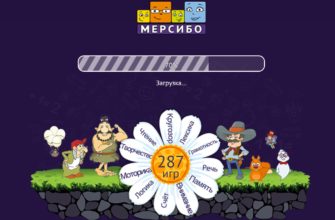
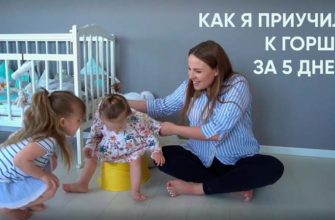
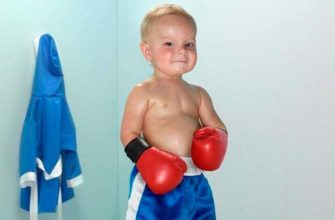
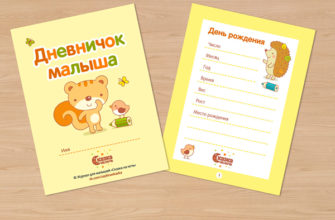
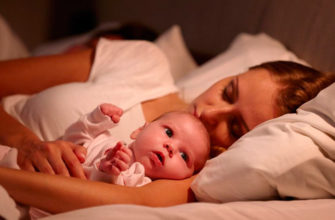
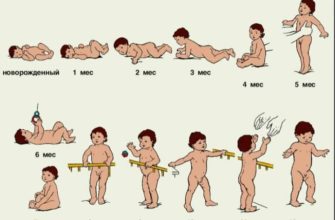
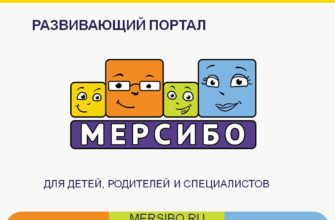

Very nice article! Thank you, it’s written in “5 +” !!! There would be more such articles from the point of view of the usefulness of the material (I really liked how the main aspects of development were highlighted). Everything is clear and clear. Thank you very much! Now I have reassured myself that much has been described we can do the article, but about the eider and the bibi - so it’s easier for the child to get used to the designation of the subject, at the same time you can call a spade a spade.
And for me, it was not so much. Because we started to keep our heads in the second month of life. And practically in the same period, turn over.
Yes, we have evolved in approximately this way, in terms of physical actions. But as for weight - they gained much more. We had a good appetite 🙂
I also began to introduce complementary foods at 6 months. I think this is the best time, neither late nor early
The most interesting thing begins after six months of a child’s life. The little man becomes aware, he understands everything and strive for communication.
And we didn’t crawl at all, we went right away.I don’t even know if it is good or not, but we started talking earlier than our peers.
The first month for the baby is the most important and difficult.
Feed the beginning with 5. Homemade mashed potatoes.
My baby at 8 months old has already gone! we did not crawl.
I remember a month later we started to hold the head well
By the year we were running well and talking mom!
I’ll soon become a mother and after reading the article I’m not afraid to give birth. Because now I learned a lot about the baby in the first year of his life. My brother has a son and he already walks at 8 months I hope we will also have it.
Kids are the flowers of life. And each stage in their development causes emotion and joy: the first smile, the first tooth, the first step and the first mother - what could be better!
Hello, I saw in a video how a baby is vaccinated in 3 months in the buttock, is it possible to do there at this age, they make us a leg.
Thanks for such a detailed article! After reading, even questions remain, simple and affordable!
Does the author have spelling problems? Correct errors, impossible to read. What kind of “leap”, “fist”? A disgrace.
“Fist” is nonsense! Here “the book has been read by hundreds of people” - this is respect !! Everything is for a total dictation, especially future mothers - otherwise the children will receive illiteracy trauma.
I have a child from birth held holau
In the sixth month he drinks from a mug, can clap his hands. The sixth month is five full months, I understand. And at six full - flipping pages .... Who wrote this heresy?
Bad article, written by illiterate people, a child at 10 months repeats the names of animals !!!! This is who ?????? And the general nonsense not related to reality
I agree with Catherine, complete heresy. yeah, and at 1.1 the child should already go to work) after such articles, impressionable young mothers begin to panic that their child is lagging behind in development.
Every month is not true. Wrote about the child prodigy. Complete nonsense.
A nightmare, knows 10-15 words a year ??! Most children can only consciously repeat the word “mother” !! Do not write nonsense!
Not only is the spelling of a second-grader, but also statements that have no resemblance to reality! Here it is “Pediatricians consider it important to attach in the first two hours of a child’s life to her mother’s chest. As they believe, at this time between the baby and mom creates an "emotional contact". This is when mom begins to feel the baby at a distance, his feelings, needs ”
Hello author, what kind of pediatricians? What are the names, I'll find them and spit in my face! There is no research to prove this! Moms do not become telepaths after the birth of a child! They also learn to understand what this little man needs. It's just that when you are with your child 24/7, you already think faster what he needs. And this is only one aspect. The text is full of inaccuracies, they have already been noticed by other commentators. I think this article is only harmful by its misinformation !!!
Awful article.
Maybe of course, physically, some children develop like this. But to crawl for 4 months. And at 6 he sat. Rave.
In a year he will have time to use a hammer, a broom!))) Yes, he probably still washes the dishes by himself and the bed makes up in the morning. And she brings coffee to her mother in bed!)) Mothers begin such clever people and begin to think that their baby is lagging behind in development, just to enjoy how their child grows and learns. Moms, love your children as they are. Someone crawls actively, someone gets on their feet skipping the stage of crawling, someone sits diligently playing toys, sings them, and someone focuses on movement and spends all his free waking time crawling, at least, opening cabinet doors, etc. e. Some hone their skills for a long time and then move on to another.And some lie around for a long time and begin to crawl, get up and walk in a month. All individually. Rejoice and love your children. They are growing so fast.
Is it right to start intellectual development from birth?
Our child, at 3.5 months old, started trying to crawl, if they put support on his legs, he began to push off from her and could crawl to the toy, about 20 cm apart. ALSO, my sisters and I went 10 months !! But again, everything is individual, it all depends on the physical. Data of the child and his temperament. Article 👍